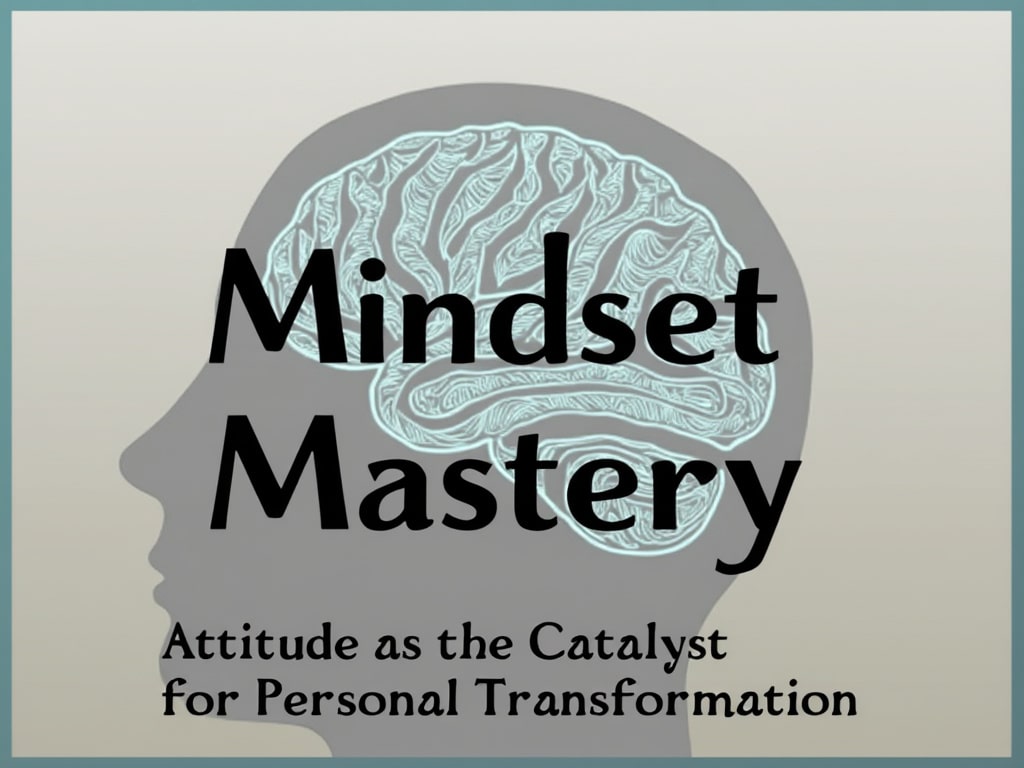
1. Self-Reliance and Responsibility
Life’s Direction and Accountability
No one else will steer the course of your life—you must take the helm. As the actress Katharine Hepburn once said, “If you don’t paddle your own canoe, you don’t move.” True success emerges when you embrace the idea that only you can initiate, sustain, and navigate your path. This isn’t about assigning blame or finding fault; it’s about acknowledging that every choice you make influences your future. Even in circumstances beyond your control, your response and resilience define your outcomes. By assuming full responsibility for your decisions—both the fruitful and the flawed—you become the architect of your destiny.
Power and Success
Genuine power isn’t demanded; it’s earned through integrity, consistent actions, and a track record of trustworthiness and reliability. This often involves recognizing problems that others overlook, helping people in meaningful ways, and consistently striving to add value. The momentum of your personal growth stems from persistent effort, strong moral character, and an unyielding commitment to honesty and diligence. When you take responsibility for your actions, your reputation becomes your legacy, and with that legacy comes real, lasting success.
Key Takeaway: Embrace self-reliance and accountability. Your ability to shape your future is measured by the integrity of your actions and the degree to which you own your outcomes.
2. Imagination and Vision
Visualizing Possibilities
All meaningful innovation starts with imagination. By envisioning a better world—or a better version of yourself—you create a mental map that guides you forward. Instead of viewing constraints as permanent, see them as opportunities waiting to be transformed. The “unimaginable” becomes achievable when you dare to picture it. Whether you aspire to launch a new business, start a creative project, or simply improve your personal life, a clear mental image of your end goal serves as a powerful compass.
Creativity and Problem-Solving
Imagination is like a mental laboratory. Here, you can experiment with ideas, test solutions, and refine strategies before bringing them into reality. By rehearsing success in your mind, you minimize costly trial and error and sharpen your problem-solving skills. In essence, you gain the courage to innovate, because within your imagination, no setback is permanent—only a cue to adjust and improve.
Key Takeaway: Imagination fuels progress and innovation. Your vision guides you toward possibilities that once seemed unreachable, enabling you to transform thought into tangible achievement.
3. Persistence and Resilience
Embracing Adversity
Challenges are not obstacles to be dreaded; they’re the proving grounds of character and skill. Just as endurance athletes push through grueling terrain to become stronger, life’s hardships mold you into someone more resilient and resourceful. Setbacks, failures, and disappointments teach you how to navigate rocky paths. With every hurdle you face, you build the mental and emotional muscles needed to tackle even greater trials that may lie ahead.
Adapting and Continuing
Persistence is the willingness to stay the course, even when storms gather overhead. Instead of abandoning your goals at the first sign of trouble, adapt and adjust. Endurance often makes the difference between settling for mediocrity and achieving excellence. When you persist, you prove to yourself—and to others—that you can outlast temporary discomfort and emerge stronger on the other side.
Key Takeaway: Success demands resilience in adversity. Growing from hardships and remaining adaptable fosters personal strength, enabling you to keep moving forward against all odds.
4. Teamwork and Support
Strategic Planning
No one can achieve greatness alone. Effective teamwork emerges from thoughtful planning, role clarity, and a solid understanding of the collective mission. Anticipate potential issues and have backup strategies ready so that unexpected difficulties don’t derail your progress. Within a united group, each member’s skills and strengths complement one another, forming a powerful, cohesive unit.
Mutual Support
A supportive network magnifies your efforts. When you offer encouragement, guidance, and expertise to others—and receive the same in return—you create a synergy that multiplies success. Mutual support extends beyond professional goals; it nurtures trust, loyalty, and empathy. By sharing not just the workload but also the dreams and aspirations behind it, every team member gains resilience and confidence.
Key Takeaway: Great achievements often result from collective effort. Careful planning, well-defined roles, and mutual support transform individual talents into formidable forces.
5. Growth Through Discomfort
Facing Fears
Real growth begins at the edge of your comfort zone. When you dare to confront fears—whether it’s public speaking, launching a business, or learning a new skill—you expand your capabilities. Discomfort is a natural byproduct of stepping into unfamiliar territory. Over time, you learn that fear is just a signal that you’re about to discover a new facet of your potential.
Self-Discipline
No sustainable growth happens without discipline. Self-discipline is what keeps you going after the initial surge of enthusiasm dissipates. It transforms “I should” into “I will.” By committing to steady, purposeful action, even when no one is watching or praising, you strengthen your resolve. The ability to persist through difficult stretches sets you apart from those who give in at the first sign of hardship.
Key Takeaway: True growth requires confronting discomfort, honing self-discipline, and consistently choosing action over hesitation.
6. The Power of Choices and Actions
Directing Outcomes Through Action
Every outcome you experience can be traced back to the decisions you make and the actions you take. Clarity of purpose is important, but clarity alone is powerless without execution. Whether you seek financial stability, artistic expression, improved health, or stronger relationships, you must align daily behaviors with your long-term vision. In doing so, you transform wishes into realities.
Decisiveness
Hesitation is the enemy of progress. You can have the brightest ideas or the noblest intentions, but without decisive action, nothing changes. By confidently selecting a direction and moving forward—while staying open to necessary adjustments—you build momentum. That momentum carries you over obstacles, fueling your journey toward the goals you’ve set.
Key Takeaway: Your actions shape your destiny. Decide, act, and iterate to transform abstract dreams into concrete results.
7. Strength in Adversity
Adversity as a Learning Tool
Hardships are more than stumbling blocks; they are educational stepping stones. The lessons you learn when facing financial troubles, health issues, relationship strains, or professional setbacks deepen your resilience. Every difficult moment leaves you better equipped to handle the next challenge that arises.
Preparation for Hardship
Preparation doesn’t eliminate adversity, but it enables you to confront it with greater confidence and composure. Whether that means building an emergency fund, learning stress-management techniques, or developing physical strength and endurance, preparation reduces the shock when tough times arrive. With a prepared mind, body, and spirit, adversity becomes less intimidating.
Key Takeaway: Adversity strengthens your ability to navigate life’s unpredictable currents. Adequate preparation and a growth mindset turn trials into stepping stones.
8. Value of Hard Work and Sacrifice
Building a Strong Work Ethic
There are no shortcuts to genuine, lasting success. Hard work, combined with persistence, is the fuel that drives extraordinary achievements. Athletes train tirelessly, entrepreneurs invest countless hours, and artists painstakingly refine their craft. This sustained effort creates a foundation that can withstand adversity. Over time, a strong work ethic becomes part of your identity, enabling you to tackle increasingly ambitious goals.
Enduring Through Challenges
When you choose the path of hard work and sacrifice, you distinguish yourself from those who settle for less. While others retreat at the first sign of struggle, you press on, building a reputation for reliability and excellence. Your enduring commitment to moving forward—despite discomfort, pain, or temporary setbacks—marks you as someone truly dedicated to their purpose.
Key Takeaway: Success is earned through unwavering work ethic, resilience, and the willingness to sacrifice comfort today for achievement tomorrow.
9. Gratitude and Appreciation
Recognizing Contributions
No endeavor is accomplished in isolation. Behind every success story, countless individuals have offered encouragement, collaboration, and wisdom. When you pause to acknowledge their contributions—be it mentors, teammates, supporters, or even critics—you cultivate gratitude. This sense of appreciation not only enriches your relationships but also inspires others to continue giving their best.
Celebrating Progress
Gratitude isn’t limited to external factors; it also involves recognizing your own strides. Celebrating small wins provides motivation along a challenging path. Each milestone, no matter how modest, is a testament to your growth and dedication. Pausing to appreciate progress reminds you that success is not just a destination—it’s a journey worth savoring.
Key Takeaway: Gratitude and appreciation create a positive environment, fueling motivation and reinforcing the bonds that make collective and personal victories possible.
10. Self-Improvement and Learning
Lifelong Learning
The world is in constant flux, and staying relevant requires an ongoing commitment to learning. By continuously acquiring new knowledge and skills, you remain adaptable and prepared for emerging opportunities. Lifelong learners don’t fear change; they welcome it. They see every experience—good or bad—as a lesson that expands their understanding and capability.
Focusing on Strengths
While addressing weaknesses can help you grow, placing extra emphasis on your strengths often yields greater returns. Cultivating what you naturally excel at enhances your productivity and impact. By leveraging your talents, you become more efficient and more confident, enabling you to contribute at the highest level.
Key Takeaway: Embrace a growth mindset, learn continuously, and invest in your strengths. Adaptability and expertise pave the way to long-term success.
11. Mindset and Attitude
Cultivating a Positive Outlook
Your mindset is a powerful lens shaping how you perceive and respond to the world. A positive outlook transforms setbacks into stepping stones and frustrations into fuel for improvement. Belief in your ability to overcome challenges is essential. When you choose optimism, you empower yourself to find solutions, inspire others, and move beyond the confines of self-doubt.
Owning Happiness
Happiness doesn’t hinge solely on external circumstances. It’s found within, springing from a purposeful life, a grateful heart, and an open mind. By embracing love, nurturing meaningful relationships, and seeking opportunities for personal and spiritual growth, you take ownership of your happiness. This internal fulfillment radiates outward, enhancing not only your own life but also the lives of those around you.
Key Takeaway: Your mindset and attitude influence every aspect of your journey. Cultivate positivity, believe in your capabilities, and embrace happiness from within.
Putting It All Together
The principles outlined here—self-reliance, imagination, resilience, teamwork, calculated discomfort, decisive action, strength in adversity, hard work, gratitude, continuous learning, and a positive mindset—form the bedrock of personal and professional success. By weaving these values into the fabric of your daily life, you create a powerful synergy that propels you forward.
Remember, you control the narrative of your journey. Own your choices, imagine beyond limits, persist through hardships, lean on others when needed, embrace discomfort for growth, take decisive actions, learn constantly, work hard, show gratitude, and choose a mindset that uplifts you and those around you. These are the foundations from which greatness is built.




